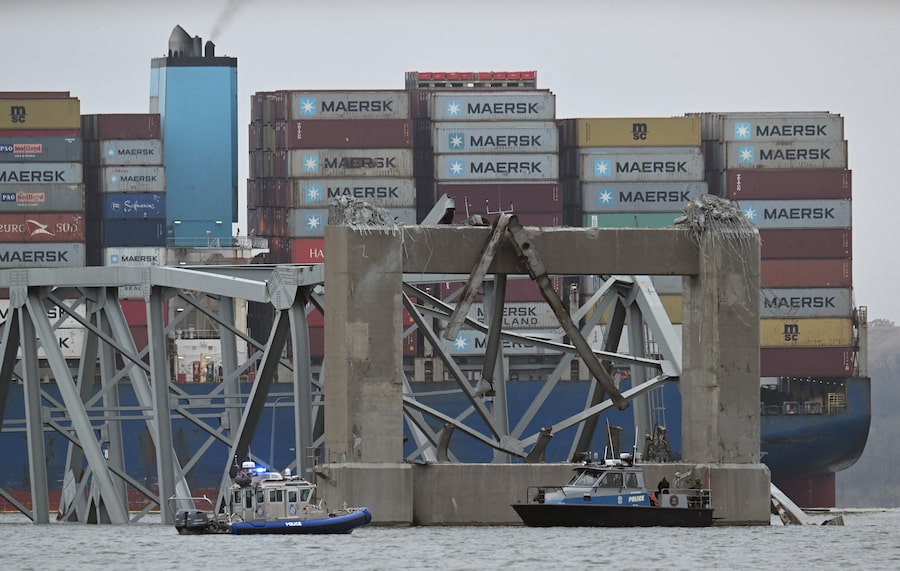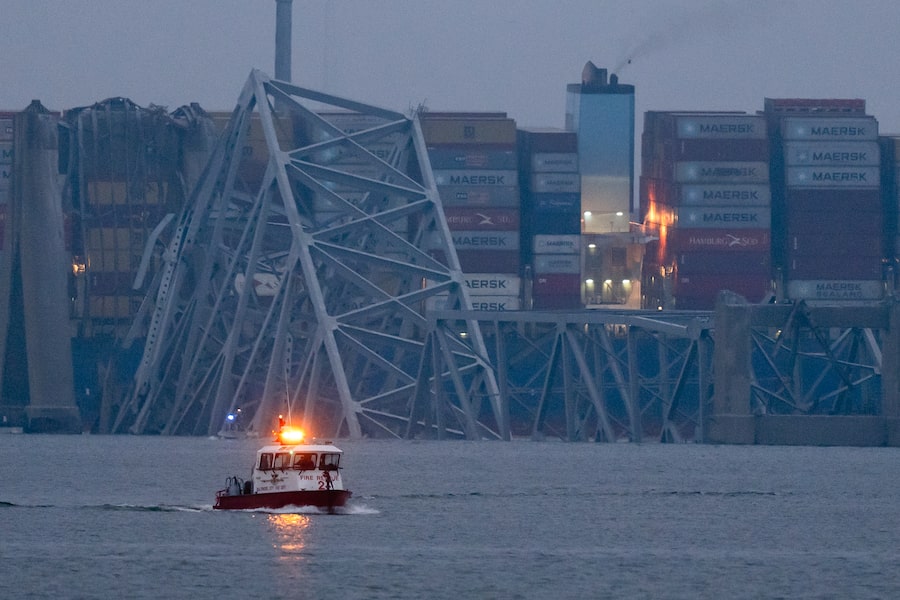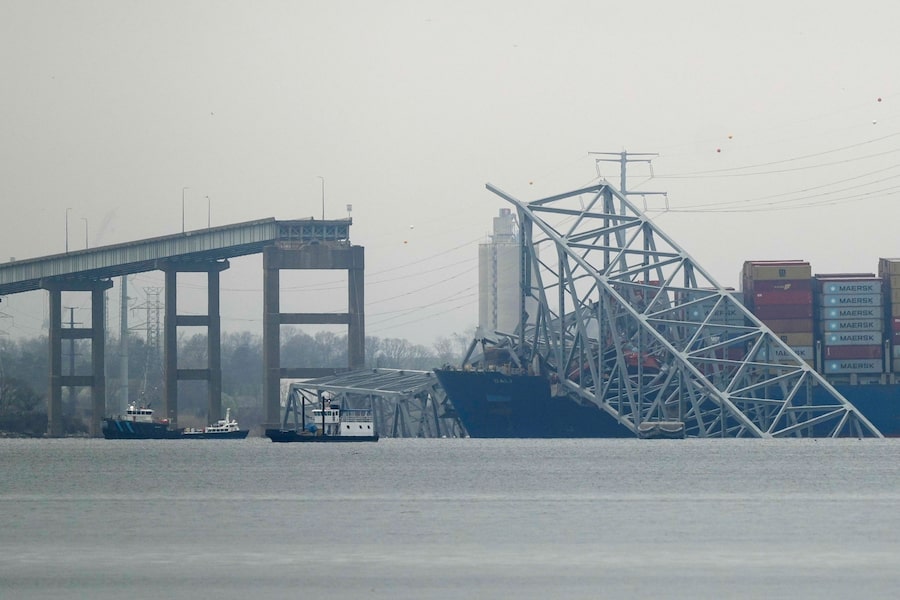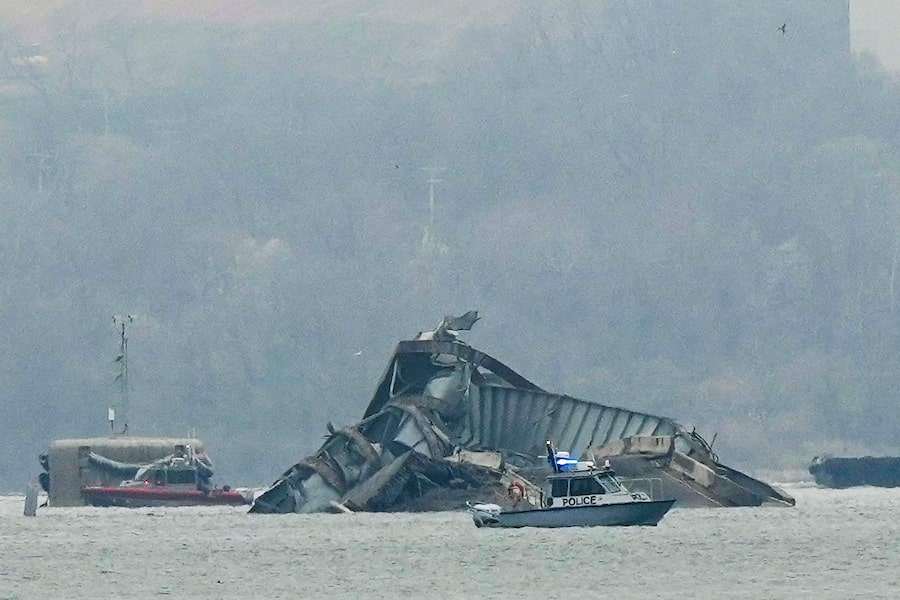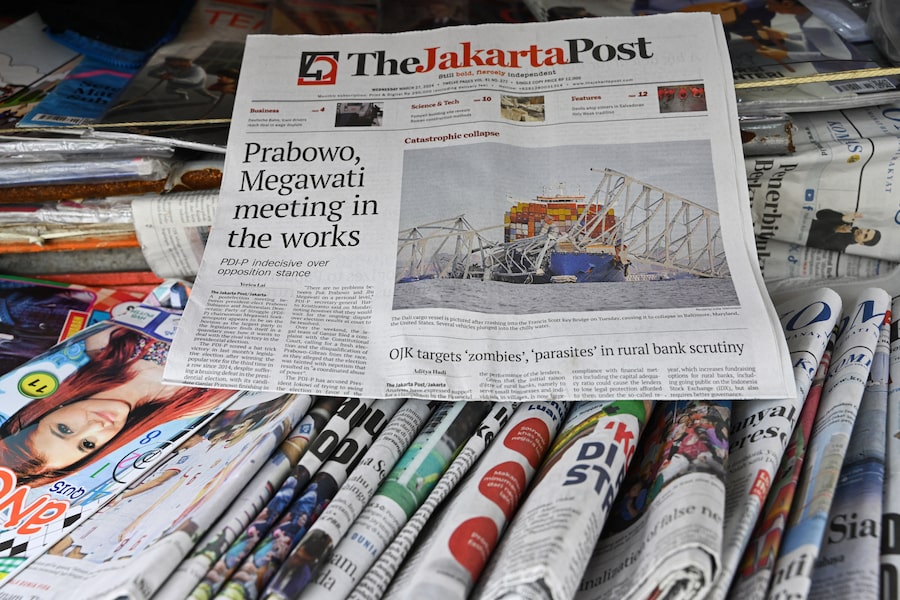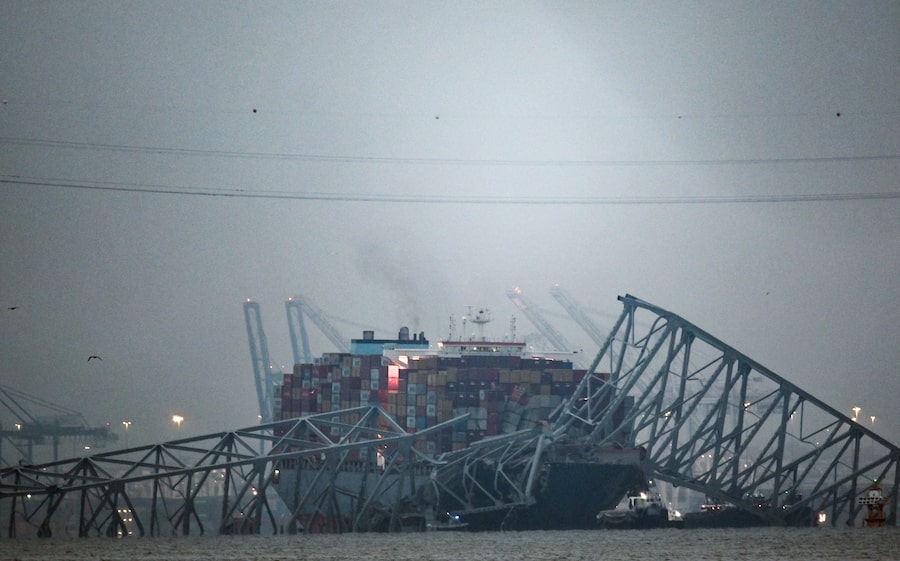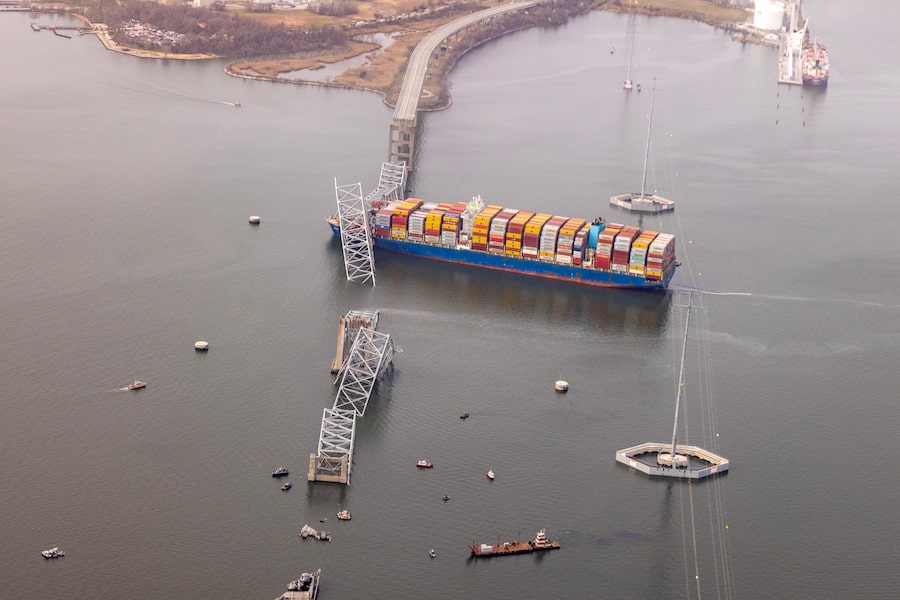
A container ship rests against wreckage of the Francis Scott Key Bridge on March 26, as seen from Pasadena, Md.Mark Schiefelbein/The Associated Press
Baltimore’s Francis Scott Key Bridge collapsed early on Tuesday after a container ship smashed into a pylon, sending eight people into frigid water below. Authorities stopped people from using the bridge after getting a mayday call, which Maryland’s governor said saved lives.
What happened in Baltimore?
At 1:27 a.m. ET (0527 GMT), a container ship named the Dali was sailing down the Patapsco River when it struck a pylon of the bridge, crumpling almost the entire structure into the water. The vessel’s crew notified authorities of a power issue before the crash, Maryland Governor Wes Moore said. The bridge was up to code and there were no known structural issues, he said.
There was no indication of terrorism, police said.
Why did the bridge collapse?
The metal truss-style bridge has a suspended deck, a design that contributed to its total collapse, engineers say. The ship appeared to hit a main concrete pier, which rests on soil underwater and is part of the foundation.
Are there any casualties?
A construction crew was fixing potholes on the bridge and eight people fell 185 feet (56 meters) into the river where water temperatures were 47 F (8 C).
According to research for the Federal Aviation Administration, that is the upper limit of what a human could survive falling into water.
Two people were rescued, one unharmed and one critically injured. Six people remain missing. Authorities saved lives by stopping vehicles from using the bridge after receiving a mayday call, the Maryland governor said.
The ship also dropped its anchors to try to avoid the collision.
What do we know about the ship that was involved?
The Dali was leaving Baltimore en route to Colombo, Sri Lanka. All 22 crew, including two pilots on board, have been accounted for and there were no injuries, the ship’s manager, Synergy Marine Group said.
The registered owner of the Singapore-flagged ship is Grace Ocean Pte Ltd, LSEG data show. The ship is 948 feet (289 meters) long and was stacked high with containers.
The ship can hold up to 10,000 twenty-foot equivalent unit, or TEU, a measure of cargo capacity. It was carrying 4,679 TEU.
What do we know about the bridge that collapsed?
The Francis Scott Key Bridge was one of three ways to cross the Baltimore Harbor and handled 31,000 cars per day or 11.3 million vehicles a year.
The steel structure is four lanes wide and sits 185 feet (56 meters) above the river.
It opened in 1977 and crosses the Patapsco River, where U.S. national anthem author Francis Scott Key wrote the “Star Spangled Banner” in 1814 after witnessing the British defeat at the Battle of Baltimore and the British bombing of Fort McHenry.
How will the bridge collapse impact the Baltimore port?
Traffic was suspended at the port after the collision. It is one of the smallest container ports on the Northeastern seaboard, handling about a tenth of the volume that passes through the Port of New York and New Jersey.
The flow of containers to Baltimore can likely be redistributed to bigger ports, said container shipping expert Lars Jensen. However, there could be major disruptions in shipping cars, coal and sugar.
It is the busiest U.S. port for car shipments, handling at least 750,000 vehicles in 2023, according to data from the Maryland Port Administration.
In 2023, the port was the second busiest for coal exports.
It is also the largest U.S. port by volume for handling farm and construction machinery, as well as agricultural products such as sugar and salt.
A list of notable disasters involving ships or barges hitting bridges in the U.S.:
Popp’s ferry bridge
March 20, 2009: A vessel pushing eight barges rammed into the Popp’s Ferry Bridge in Biloxi, Mississippi, resulting in a 150-foot section of the bridge collapsing into the bay.
Queen Isabella Causeway: eight dead
Sept. 15, 2001: A tugboat and barge struck the Queen Isabella Causeway in Port Isabel, Texas, causing a midsection of the bridge to tumble 80 feet into the bay below. Eight people died after motorists drove into the hole.
Eads Bridge: 50 injured
April 14, 1998: The Anne Holly tow travelling through the St. Louis Harbor rammed into the centre span of the Eads Bridge. Eight barges broke away. Three of them hit a permanently moored gambling vessel below the bridge. Fifty people suffered minor injuries.
Big Bayou Canot: 47 dead
Sept. 22, 1993: Barges being pushed by a towboat in dense fog hit and displaced the Big Bayou Canot railroad bridge near Mobile, Alabama. Minutes later, an Amtrak train with 220 people aboard reached the displaced bridge and derailed, killing 47 people and injuring 103 people.
Seeber Bridge: one dead
May 28, 1993: The towboat Chris, pushing the empty hopper barge DM3021, hit a support tier of the Judge William Seeber Bridge in New Orleans. Two spans and the two-column bent collapsed onto the barge. Two cars carrying three people fell with the four-lane bridge deck into a canal. One person died and two people were seriously injured.
Sunshine Skyway Bridge: 35 dead
May 9, 1980: The 609-foot freighter Summit Venture was navigating through the narrow, winding shipping channel of Florida’s Tampa Bay when a sudden, blinding squall knocked out the ship’s radar. The ship sheared off a support of the Sunshine Skyway Bridge, dropping a 1,400-foot section of concrete roadway during the morning rush hour. Seven vehicles, including a bus with 26 aboard, fell 150 feet into the water. Thirty-five people died.
A container ship smashed into a four-lane bridge in the U.S. port of Baltimore in darkness on Tuesday (March 26), causing it to collapse, sending cars and people plunging into the river below.
Reuters
